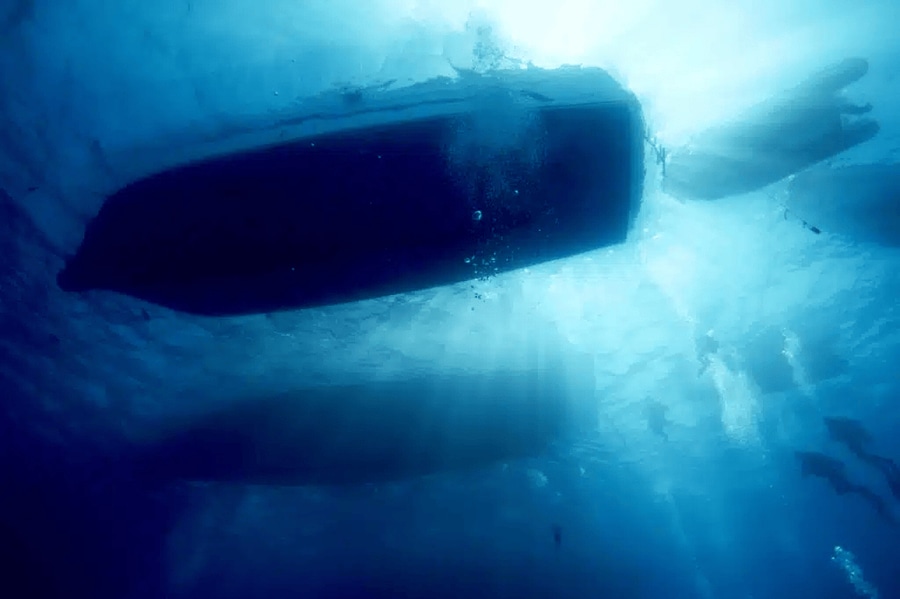
#Industry News
The Science of Quiet: Why Underwater Noise Pollution Matters
Beneath the surface of our oceans lies a world shaped by sound. For whales, dolphins, and even coral reef inhabitants, hearing is the primary sense that defines survival. From echolocation to navigation and mating, underwater species rely on natural
The Ocean is a Symphony
In the deep, light doesn’t penetrate far, and sight becomes ineffective. Sound, however, travels nearly five times faster in water than in air, making it the primary medium for marine communication. Whales sing songs that span miles. Dolphins use sonar clicks to hunt and navigate. Even tiny shrimp create popping noises that define reef habitats.
But today, the symphony of the ocean is being drowned out. Cargo ships, pleasure boats, oil drilling, and even sonar testing contribute to a relentless hum of noise, especially in busy coastal zones. For marine mammals, this can be disorienting or even deadly.
How Noise Pollution Harms Marine Life
Decades of research now show that chronic exposure to underwater noise impacts marine species in profound ways:
Navigation disruption: Whales and dolphins rely on echolocation to “see” through sound. Noise pollution interferes with this ability, sometimes leading to strandings and collisions.
Stress and behavior change: Studies show that noise raises cortisol levels in marine mammals, triggering stress responses that impair feeding, mating, and social bonding.
Communication loss: Many species use sound to coordinate group movement and parental care. When engines roar, these vital communications are lost.
Habitat degradation: Coral reefs, home to over 25% of marine life, are also vulnerable. Reef fish rely on auditory cues for orientation. Chronic noise drives them away, disrupting reef health and biodiversity.
These aren’t theoretical concerns—they’re documented outcomes. That’s why the scientific and environmental communities are urgently advocating for quieter, cleaner propulsion systems.
Why Electric Propulsion is the Solution
Traditional combustion engines are mechanically noisy and emit low-frequency sounds that travel far underwater. Electric propulsion, on the other hand, operates with far less vibration and virtually no acoustic footprint in the low-frequency range. This change isn’t merely technical—it’s ecological.
Electric propulsion reduces underwater noise pollution in three essential ways:
Quiet operation: Electric motors eliminate the percussive sounds of internal combustion and the propeller cavitation typical of diesel systems.
Instant torque with minimal vibration: With no idling engine or gearbox rattle, electric boats glide more quietly and efficiently.
Reduced maintenance and emissions: The quieter, cleaner mechanics of electric systems also mean fewer pollutants, another threat to ocean ecosystems.
By switching to electric propulsion, boat owners and fleet operators can play an active role in preserving ocean health, especially in sensitive areas like whale migration corridors, marine sanctuaries, and coral reefs.
Electric Propulsion in Action: Protecting Whales and Dolphins
Whale and dolphin populations are especially vulnerable. Shipping lanes and recreational boating often overlap with their migratory routes. In these regions, the noise generated by conventional engines can cause whales to abandon critical feeding and mating areas. In some cases, disorientation from sonar and engine noise leads to mass strandings.
Electric propulsion creates a new possibility: boats that can move through these habitats with minimal disturbance. Whale-watching operators, eco-tour guides, and marine researchers increasingly favor electric boats for this very reason. By going electric, they don’t just observe marine life—they help protect it.
Coral Reefs and the Need for Silence
Reef ecosystems may seem visually stunning, but they’re also audibly complex. Reef fish use acoustic cues to settle in safe zones after spawning. Noise pollution can disrupt this process, weakening reef populations and biodiversity.
Electric boats—especially when paired with advanced monitoring systems—allow reef conservation groups and marine parks to maintain low-impact patrols and research activities. Silence, in this context, is a conservation tool.
Helios Marine: Engineering the Future of Quiet Oceans
At Helios Marine, we believe that protecting the acoustic environment of the oceans is inseparable from decarbonizing marine transportation. That’s why our solutions focus on quiet, intelligent propulsion backed by advanced monitoring systems.
Our Electric Propulsion and IoT Package offers zero-emission operation with near-silent performance. It eliminates mechanical noise and reduces propeller turbulence, delivering an experience that’s both environmentally responsible and enjoyable for passengers.
But propulsion is just the beginning. Effective noise reduction and ecological protection also require real-time insights and intelligent fleet management. That’s where our connected technologies come into play.
Helios Marine Link: Control, Monitor, Protect
The Helios Marine Link is the digital command center for your boat. From a single interface, you can:
Monitor battery performance and engine efficiency
Track sea depth and fish sonar for safer, quieter navigation
Access real-time weather updates, including wind and temperature
View detailed propulsion analytics to fine-tune operations
By offering full visibility into propulsion and environment, the Marine Link empowers captains to make informed decisions that reduce noise impact and optimize performance, especially in sensitive marine zones.
Helios Fleet Link: Smarter Management for Quieter Fleets
For operators managing multiple vessels, such as charter companies, research groups, or marine parks, the Helios Fleet Link offers a macro-level view.
Fleet Link delivers:
Usage data like hours run and distance covered
CO₂ emissions tracking across the fleet
Maintenance alerts to prevent noisy engine wear
Location tracking to identify overlap with protected habitats
This system transforms fleet management into a tool for ecological stewardship. Operators can set and meet acoustic footprint reduction goals, align with sustainability standards, and provide transparent reports to regulators or stakeholders.
Marine Battery System: Silent Power at Sea
At the heart of every electric propulsion system is a reliable battery. Our Marine Battery System is engineered for marine-grade durability and consistent performance, offering long runtimes, rapid recharge, and intelligent cooling.
Quiet propulsion starts with clean, quiet energy, and our battery technology delivers exactly that.
Leading the Quiet Revolution
Noise pollution might be invisible, but its impact is profound. From stranded whales to silent reefs, the consequences of ignoring acoustic disruption are too great to overlook. Fortunately, we don’t have to.
Electric propulsion, when paired with smart monitoring and sustainable operation, gives us a powerful way forward. At Helios Marine, we’re proud to support that transition, not just with products, but with purpose.
Whether you’re a recreational boater, fleet operator, or marine conservationist, you have a role to play in restoring peace beneath the waves. And when you choose Helios, you’re choosing a future where marine mobility and marine life can thrive together. For more information, contact us at sales@heliosmarine.io or +359 88 4444 818.





